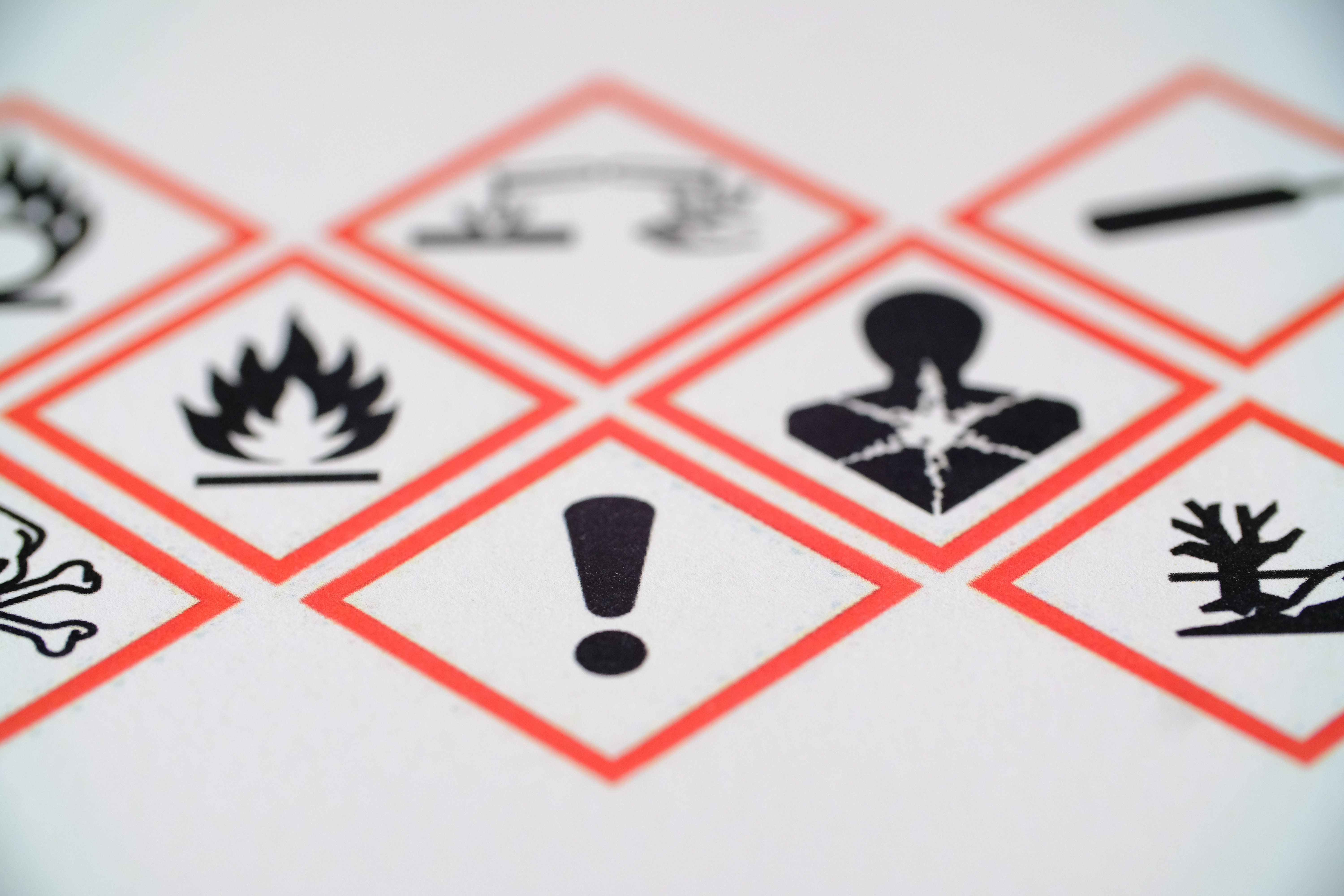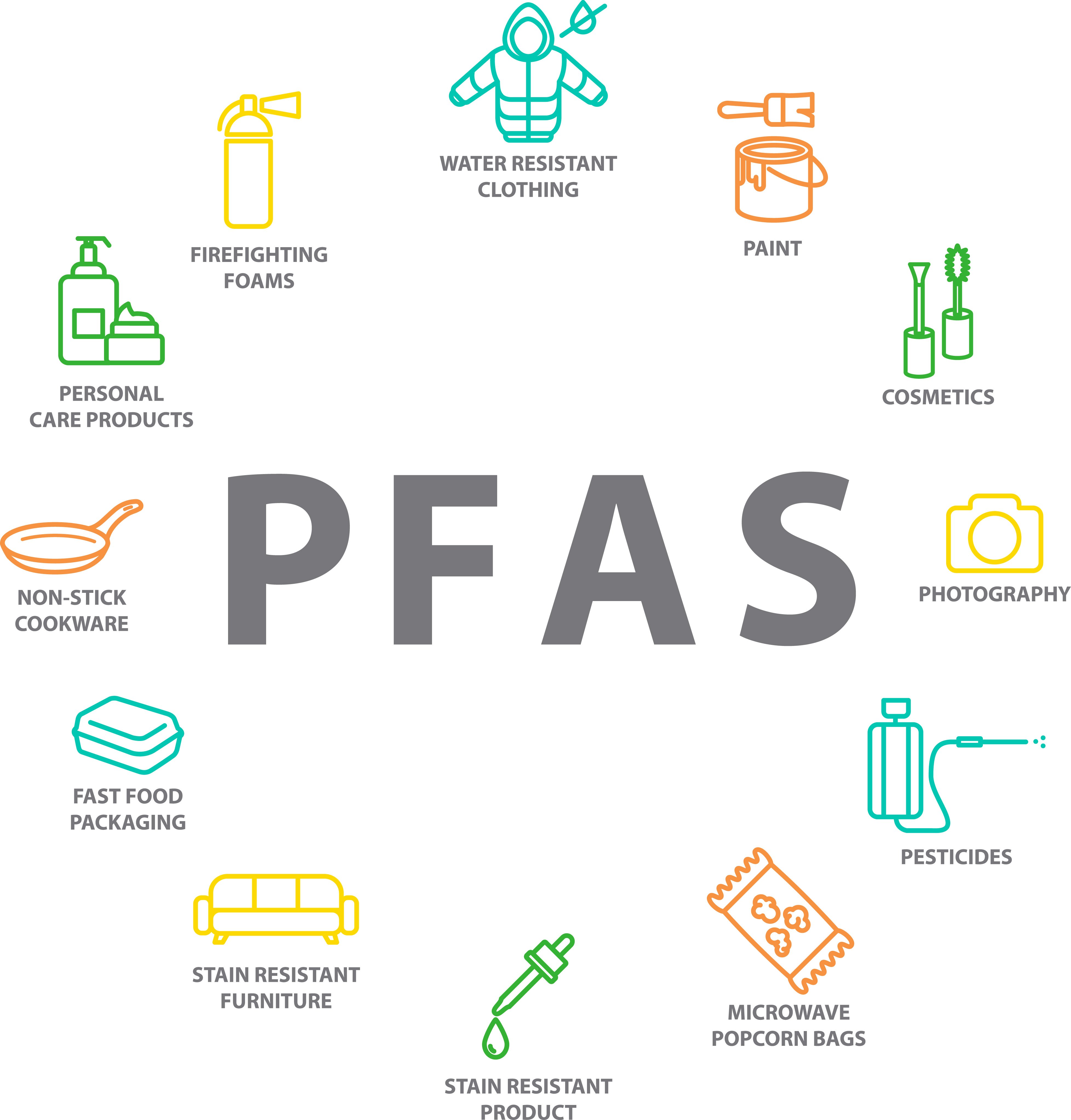Picture a world where your favorite non-stick pan, waterproof jacket, and even your fire extinguisher could be harming you and the environment. Unfortunately, this is the reality we face with the widespread use of PFAS. These man-made chemicals have been utilized for their remarkable water and stain-resistant properties. But beneath the surface, there are concerns about the impact of these chemicals on our health and environment.
As a packaging provider, SunDance is dedicated to creating products that are safe for our customers, the environment, and their communities. We are also committed to educating our customers about the importance of choosing safer packaging products. SunDance is proud to be a part of the movement towards PFAS-free products and will continue to innovate new solutions that help our customers reduce their carbon footprint while preserving our planet.
A Brief History of PFAS Chemicals
In the late 1940s and 50s, large U.S. chemical companies turned their attention from the all-consuming war effort to refocus their businesses on developing products for mass consumption. Their innovations ranged from plastics, laminates, and coated papers to synthetic fabrics, cleaners, pesticides, and countless other manmade products, which were created through the use of chemicals known as PFAS. Only decades later did we begin to realize the price we were paying for these modern conveniences.
Practical Uses of PFAS
PFAS consists of PerFluoroAlkyl and PolyFluoroAlkyl Substances. There are thousands of PFAS in this group of chemicals, and they are found in countless consumer, commercial, and industrial products. Among their primary uses, PFAS chemicals make fabrics, papers, cardboard, and boards stain-resistant, water-resistant, and oil-repellant.
A few practical uses of PFAS in packaging include grease-resistant paper, as found in fast food containers, burger wrappers, microwave popcorn bags, pizza boxes, paper plates, candy wrappers, and some flexible pouches.
PFAS chemicals also add stain-repellant and water-repellent properties to carpeting, upholstery, clothing, and other fabrics, including rainwear, umbrellas, and tents. They are found in everything from cleaning products, paints, varnishes, and sealants to non-stick cookware and certain personal care products.
The Price We Have Paid for PFAS
These modern conveniences have certain downsides, as might be expected from manmade chemicals that have been in use for 70 or 80 years. Following are a few findings of the Environmental Protection Agency (EPA) and observations from the Food & Drug Administration (FDA) and other authorities:
- PFAs are synthetic and do not occur naturally. These widespread, long-lasting chemicals break down very slowly over time, creating an environmental hazard both during and after their use.
- Many PFAS are found in the blood of humans and animals all over the world. They are present at low levels in a variety of foods due to chemical leaching from food containers and contamination of certain food sources.
- Across the U.S. and the globe, PFAS are found in water, air, and soil at landfills, Superfund sites, downstream rivers and lakes, and similar locations. They have been found in public drinking water systems and private wells.
- PFAS chemicals are used in foams to extinguish flammable liquid-based fires, including fire extinguishers in airports, shipyards, military bases, chemical plants, refineries, and firefighting training facilities.
- PFAS are also produced or used at certain manufacturing plants for electronics, textiles, papers, inks, and other goods.
- Exposure to some PFAS has been linked to harmful health effects in both humans and animals, and high levels of exposure over time have known deleterious effects.
Due to the nearly global use of PFAS over so many decades, it is challenging to grasp the full spectrum of potential human health and environmental impacts. However, studies are ongoing and are producing results. As an example, two of the most commonly used and highly studied PFAS are PerFluoroOctanoic Acid (PFOA) and PerFluoroOctane Sulfonate (PFOS). In recent years, these chemicals have been replaced by other PFAS, and in 2022 they were designated as hazardous substances by the EPA.

PFAS come in many shapes and sizes, which is why it is important to understand where they may be present in your day-to-day activities.
Federal Legislation Against PFAS Chemicals
Federal and state legislation has begun to address the ill effects of PFAS and is likely to have a positive impact—although it may take years to become evident. Still, in the same way that DDT, PCBs, asbestos, lead, mercury, formaldehyde, and other harmful chemicals have been banned in the U.S. and have gradually disappeared, banning PFAS will ultimately have the same beneficial results for our planet and for mankind.
Two federal-level actions in 2021 and 2022 show great promise:
- On July 22, 2021, House Bill HR 2467, known as the PFAS Action Act of 2021, was sent to the Senate for approval, where it remains under review. This bill establishes requirements and incentives to limit the use of PFAS and remediate PFAS in the environment. It directs the EPA to designate PFOA and PFOS as hazardous substances under the Comprehensive Environmental Response, Compensation, and Liability Act of 1980 (CERCLA), also known as the Superfund law. This designation requires releases of PFAS into the environment to be remediated. In addition, the bill mandates that the EPA, within five years, determine whether remaining PFAS chemicals should also be designated as hazardous substances, thus requiring remediation.
- Although HR 2467 is still pending in the Senate, on September 6, 2022, the EPA proactively designated the two PFAS known as PFOA and PFOS as hazardous substances under CERCLA.
State Laws Restricting PFAS Chemicals
Numerous state legislatures have stepped up with bills to eliminate PFAS in packaging, ban the use of firefighting foam containing PFAS, establish drinking water standards, and eliminate these chemicals from textiles, cosmetics, and other products. Some laws are in effect today, in March 2023, while others are pending.
- As of December 31, 2022, New York restrictions on PFAS in packaging make it illegal to distribute, sell, or offer for sale food packaging containing PFAS chemicals that have been added intentionally.
- As of January 1, 2023, in California food packaging using paper, paperboard, or other plant fibers containing ‘regulated PFAS’ is prohibited, including food and beverage containers, take-out containers, wrappers, utensils, straws, and more.
- As of January 1, 2023, in Maine manufacturers of products containing intentionally added PFAS must meet several specific requirements. By 2030 products containing intentionally added PFAS cannot be sold unless the state agrees to exceptions.
- As of December 31, 2023, Connecticut law prohibits manufacturers and distributors from offering for sale or for promotion purposes food packages to which PFAS have been intentionally introduced.
- As of January 1, 2024, Maryland law prohibits the use, sale, and manufacture of food packaging containing intentionally added PFAS.
- As of May 1, 2024, the state of Washington prohibits food packaging manufacturers, distributors, and retailers from manufacturing, selling, or distributing bags, sleeves, bowls, flatware, open-top containers, and closed containers intentionally using PFAS.
Other states have PFAS bills pending in their legislatures, with a special focus on PFAS in packaging, and still others are expected to follow with similar legislation.
Product Packaging Without PFAS Chemicals
PFAS has been useful in manufacturing many flexible packaging solutions for food products, liquids, nutraceuticals, and similar consumables. Water-resistant and oil-resistant properties especially lend themselves to food pouches and other flexible packaging.
As a responsible printing and packaging company, SunDance is committed to the use of sustainable printing and packaging techniques and materials. Working closely with our suppliers, we have progressively moved away from PFAS in favor of organic, biodegradable, recyclable, and compostable packaging options and sustainable coatings for printed materials. We expect to achieve a PFAS-free packaging and printing environment in 2023, well ahead of our original projections.
Contact us today for help with your next packaging project!












